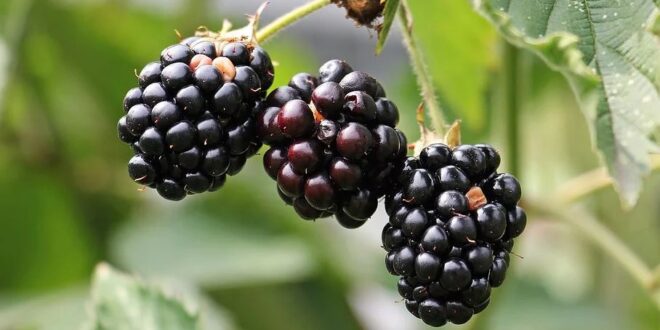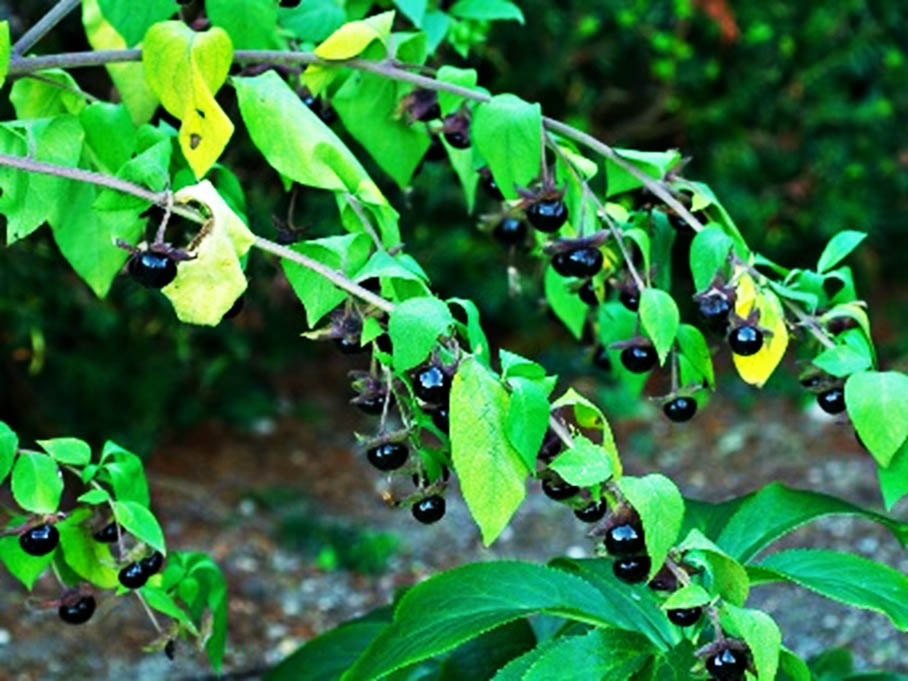Today we speak of wild fruits, those that abound in the fields in attractive bunches of red, black or purple. Who doesn't remember, as a kid, picking blackberries, raspberries or wild strawberries? However, we have to be careful, as not all wild fruits are edible.
Some more appetizing looking ones are poisonous and even deadly. Let's take a trip through some that we should avoid completely, starting with the nightshade (Atropa belladonna L.).
Every part of this plant is dangerous, from the berries to the leaves. It grows among ruins and in abandoned gardens and is rarely cultivated due to its high toxicity.
Its fruits are toxic, green in early summer, turning black when ripe (see image). Symptoms of belladonna poisoning include tachycardia, dilated pupils, hallucinations, blurred vision, dry throat, among others.
The European evonym (Euonymus europaeusL.), a tall tree or shrub with a rounded crown, is another dangerous plant that grows in woods and hedges and has a pinkish-red fruit whose ingestion is harmful and can cause intense vomiting in humans.
The well-known yew (Taxus baccata L.), a shrubby or arboreal species with a pyramidal or enlarged crown, has only harmless scarlet fruits, all other parts of the plant being highly poisonous, including the seeds inside its fleshy arils, having a paralyzing effect on the heart. Other symptoms of yew berry poisoning can include dry mouth, vomiting, dizziness, cramps, breathing difficulties, arrhythmias, tension breaks and fainting.
Other fruits to avoid are those of bryony (Bryonia dioica L.), from Holly (Ilex aquifolium L.) and the privet (Ligustrum vulgare L.), just to name a few plants.

Given that there are some of the dangers, I now invite the reader to let himself be carried away by the imagination and the pleasure of picking up edible wild fruits, fully enjoying their flavors. The blackberries (from the wild Rubus ulmifolius S.) are the best known fruits of the bushes. The best time to harvest them is before September, as after that time they become soft.
The raspberries (from the raspberry Rubus idaeus L.) belong to the same family as the blackberries and although less abundant, they are equally tasty, if the reader allows me to share the preference!
The sloe, fruit of the wild blackthorn (Prunus spinosa L.) it matures in summer and, although it is edible, it has a sour aftertaste, which is why it is mostly used to make wine or flavor gin.
The well-known blueberry (Vaccinium myrtillus L.), the elderberry (Sambucus nigra L.) and the wild strawberry (Fragaria vesca L.) are other species with delicious berries that can be enjoyed without danger.
Remember this last recommendation: never pick wild berries to eat if you are not sure they are harmless and, if in doubt, do not touch them.
Note: Text written by Ivone Fachada under the Science@Bragança project and now available for the “Culture, Science and Technology” project of the Portuguese Press Association
Author: Ivone Fachada is the executive director of the Centro Ciência Viva de Bragança.
Postgraduate in History of Science and Science Education at the University of Aveiro and University of Coimbra (attendance of an interdisciplinary doctorate).
Master in Nature Management and Conservation from the University of Azores.
Degree in Forestry Engineering from the Polytechnic Institute of Bragança.
member of ScicomPT – National Science Communicators Network, being part of the Board of this Association between October 2017 and May 2020.
Teacher trainer, accredited by the Scientific and Pedagogical Council for Continuing Education in the domains: “A64- Environmental Sciences” and “D08 – Environmental Education”.
Author or co-author of more than thirty articles in journals, conferences and book chapters.





















Comments